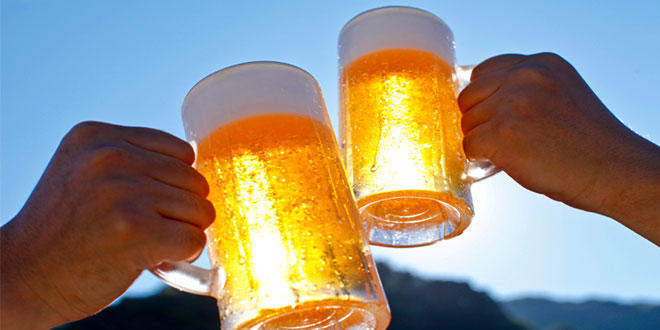Manufacturing Innovation Blog
Powered by the Manufacturing Extension Partnership

What’s still based on centuries-old technology but is experiencing a renaissance of growth and entrepreneurship today? Brewing beer – that frothy, cold beverage that millions responsibly enjoy each day. You’ve probably seen a new local brewery open, literally in a garage based on someone’s home brewing experience who wants to grow. These local brewers are manufacturers.
Within a 20 minute walk of my house in Seattle are 10 local breweries, yet I don’t live in one of the top ten beer drinking states as defined by 24/7 Wall Street . I don’t know if that’s good or bad.
People have been making their own beer and wine for over 7,000 years. The invention of thermometers and hydrometers in the 1800’s allowed brewers to expand their operations with greater consistency via better measurement and controls.
In 1880 there were 2,266 breweries in the U.S., a decline from the 4,131 in 1873 when statistics were first being kept by the Brewers Association. By the 1920’s with prohibition this obviously went to zero. In 1990 there were 284 U.S. breweries and by 2013 there were 2,833 in operation. In 1880 there were 4.6 breweries for every 100,000 in the U.S. population, in 1990 that had dropped to 0.1 per 100,000 and by 2013 it has risen to 0.9 per 100,000 - it seems like additional growth is possible.
While overall beer consumption may be on the decline, it appears, again according to the Brewers Association that the consumption of craft beer has risen 17.2% in 2013. The overall beer market is around $100B with the craft beer market at $14.3B. As a comparison the U.S. market for new vehicles was estimated at $382B and the U.S. market for wine sales was $36.3B in 2013.
Among the top concerns for brewers is managing growth and waste water management. The Manufacturing Extension Partnership (MEP) system has worked with several breweries helping them to expand their capacities. One example is Santa Fe Brewing Company in Galisteo, NM – the New Mexico MEP center worked with the company to re-design their operations and conduct workforce training to accommodate a 26-percent increase in sales as they entered new markets.
Water is a valuable resource and a critical one in brewing for both production and cleaning, yet managing this waste is a challenge for many brewers. Recently the Pacific Northwest Pollution Prevention Center in Seattle, a partner with EPA and MEP put on a workshop, “Sustainable Brewing.” Participants discussed a number of approaches being practiced by brewers that result in re-use of water and a reduction in waste water fed into local systems.
As a manufacturing industry craft brewing alone employs more than 108,000 workers across the country at breweries and brew pubs according to the Brewers Association, with an estimated economic impact nationally of $33.9B through the supply chain it requires and purchases made in local communities. So next time you decide to head for a refreshing beverage – remember, if you were to choose a local brewery you’d be supporting U.S. manufacturing in your community with that visit. Be responsible, be safe and enjoy!
About the author
Related Posts
Comments
- Reply


